#labridae
Explore tagged Tumblr posts
Text
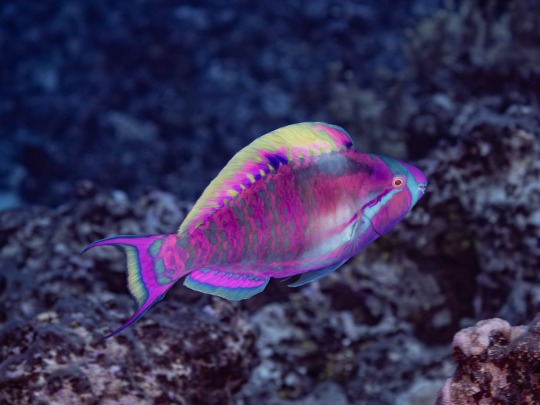
Highfin Parrotfish (Scarus longipinnis), terminal phase, family Labridae, order Labriformes, Niue in the South Pacific
These fish can be protogynous hermaphrodites.
Young fish are either male or female. All females turn male at a certain stage of development (the terminal phase), therefore all older fish are males.
photograph by Manu San Félix
#parrotfish#scarus#labridae#heraphrodite#fish#bony fish#ocean#animals#ichthyology#nature#south pacific
420 notes
·
View notes
Text

A male slingjaw wrasse (Epibulus insidiator)
by Alain Feulvarch
#slingjaw wrasse#wrasses#bony fish#fish#epibulus insidiator#epibulus#labridae#labriformes#actinopterygii#chordata
2K notes
·
View notes
Note
Harlequin tuskfish
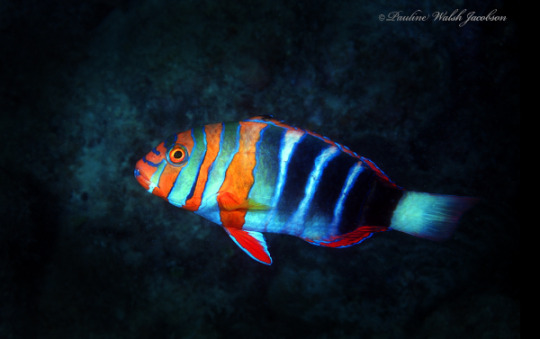
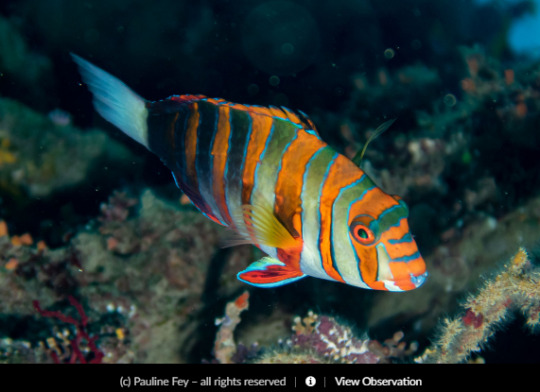
#western pacific ocean#harlequin tuskfish#actinopterygii#fish#saltwater fish#perciformes#labridae#wrasse#animal polls#poll blog#my polls#animals#polls#tumblr polls#marine animals#marine fish
69 notes
·
View notes
Note
🥚💕
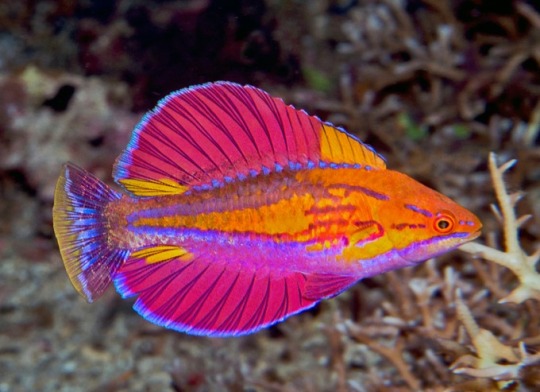
Carpenter's flasher wrasse!
(Paracheilinus carpenteri)
839 notes
·
View notes
Text
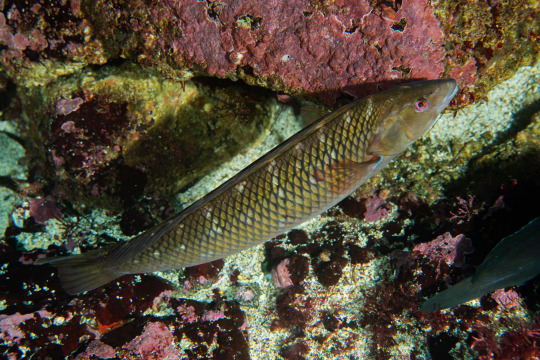
CLIMATE CHANGE WEAKENS ENDEMISM OF OCEANIC ISLANDS IN THE SOUTH PACIFIC
The Juan Fernández wrasse (Malapterus reticulatus), once considered endemic to the Juan Fernández Archipelago and Desventuradas Islands, has now been recorded along central Chile’s coast. This finding signals a potential breakdown of the natural isolation of the archipelago, likely caused by altered ocean currents linked to global warming. The species range expansion, was confirmed following spearfishers and scuba divers reports from social medias such is Instagram and Facebook.
Historically restricted to the archipelago, the Juan Fernandez Wrasse has been detected in the temperate waters from the chilean coast. Despite the 600 km separation, there is no significant ecological or biological exchange between the Juan Fernández Archipelago and mainland Chile, with oceanographic barriers like the Humboldt Current maintaining their isolation. This has resulted in extraordinary endemism, with at least 70% of the fish species in the archipelago being found nowhere else in the world. Scientists believe the warming oceans and shifts in current systems are eroding the oceanographic barriers, such are the cold current along Chile that maintain high levels of endemism in Juan Fernández, a hotspot for unique marine species.

-Juvenile Juan Fernandez wrasses thriving in the coast of continental Chile.
The Juan Fernández wrasse is a cleaner fish that feeds on parasites and dead tissue. Experts believe it may occupy an open ecological niche along Chile’s central coast, posing no competition to local species.
Photograph: Juan Fernandez wrasse in Quintay, central Chile, by José Tomas Yakasovic.
Reference: Almendras et al., 2025. The Juan Fernández Wrasse Malapterus reticulatus in the Continental Shelf of Chile. Austral Ecology 10.1111/aec.70027
#juan fernandez wrasse#chile#marine biology#marine science#malapterus reticulatus#labridae#science#sciblr#scienceblr#ecology#climate change#global warming
54 notes
·
View notes
Text
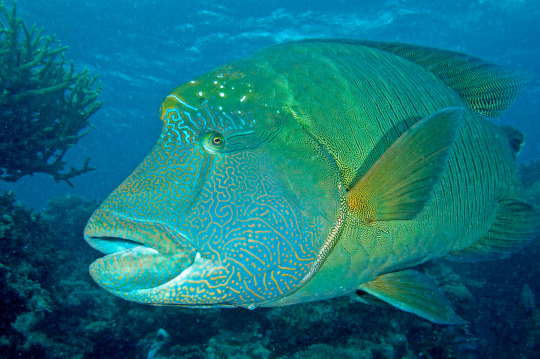
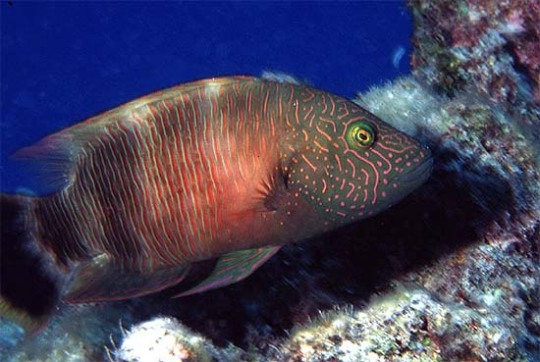
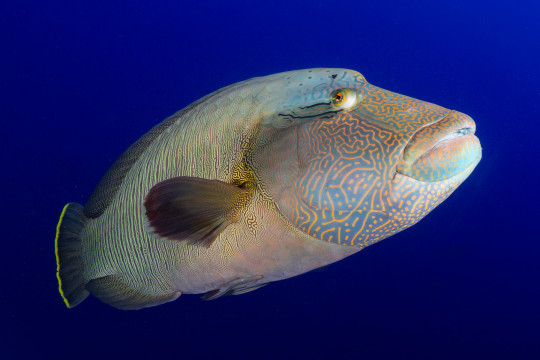
Let's Hear it for the Humphead Wrasse
The humphead wrasse, Cheilinus undulatus, is also known as the Māori wrasse, Napoleon wrasse, or the blue- tooth grouper. They can usually be found around coral reefs and steep rocky cliffs in the Indo-Pacific, particularly on the east coast of Africa, the west coast of India, and the tropical waters of southeast Asia and the Great Barrier Reef.
The Māori wrasse gets its name from the distinctive markings that adults carry. Males are blue-green or purple, while females are more often red or orange. Both have unique patterns of lines and dots covering their heads, and stripes running down the rest of their body; early researchers compared the patterns on their heads to the tattoos traditionally used by the Māori people. In addition to its striking coloration, C. undulatus is also known for being the largest member of the wrasse family. Males can reach up to 2 m (6.5 ft) long and weigh up to 180 kg (396 lbs), while females tend to be smaller. Males also have a large 'hump' on their foreheads, hence the name humphead wrasse.
Another feature of note in C. undulatus is the set of large teeth fused into a parrot-like beak. They use this beak to predate upon hard-shelled animals like mollusks, urchins, sea stars, and crustaceans. On occasion, they also feed on smaller fish and moray eels. Due to their size, adults have very few natural predators aside from sharks, but larvae and small juveniles are more often opportunistically hunted by other fish.
Like many coral reef fish, the humphead wrasse is a protogynous hermaphrodite. This means that most individuals begin life as a female, and become male later in life-- known as 'super males', they are larger than males who did not transition. Individuals first become sexually mature at 5-7 years old, and females begin transitioning to male at 9-12 years old. Spawning occurs a few times a year, and during this period over a hundred adults can congregate in an area. The female releases about 20 eggs into the water column, where they are fertilized by her chosen partner. Three to four weeks later, the eggs hatch and the larvae migrate to the nearby reef.
Conservation status: C. undulatus is considered Endangered by the IUCN. Populations have declined due to overfishing and by-catch mortalities, loss of their food sources, habitat destruction, and capture of juveniles for the aquarium trade.
If you send me proof that you’ve made a donation to UNRWA or another organization benefiting Palestinians– including esim donations– I’ll make art of any animal of your choosing.
Photos
Andrew J. Green
Lluís Masuet
George Ryschkewitsch
#humphead wrasse#Labriformes#Labridae#wrasses#ray-finned fish#bony fish#fish#marine fauna#marine fish#coral reefs#coral reef fish#indian ocean#Pacific Ocean#indo-pacific#animal facts#biology#zoology#ecology
109 notes
·
View notes
Text
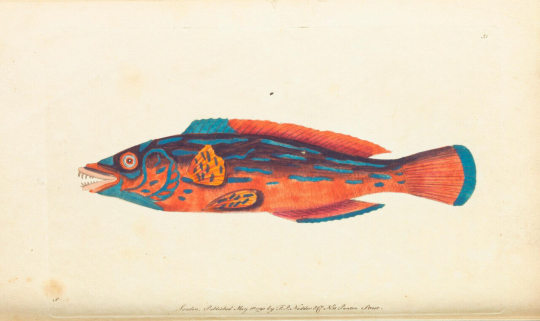
The Beautiful Sparus, Sparus formosus [Pl. 31] | The Naturalist's Miscellany v.1 | Biodiversity Heritage Library | Flickr
#george shaw#frederick polydore nodder#illustration#vintage illustration#scientific illustration#art#artists on tumblr#labridae#labrus mixtus#cuckoo wrasse
20 notes
·
View notes
Text
Our half-dozen or so bluestreak cleaner wrasses have set up a "cleaning station" right in front of one of the windows!
Larger fish, such as this young emperor snapper, are attracted to cleaning stations by the wrasses' movements and bold colors. The wrasses then get to work, plucking parasites from fins, scales, and even the inside of their clients' mouths and gills!
#keeperposting#these guys are so cool#bluestreak cleaner wrasse#cleaner wrasse#labridae#wrasse#zoology#ichthyology#marine biology#fishblr#saltwater fish#aquatic life#emperor snapper#lutjanus#lutjanidae#symbiosis#animal behavior#biology#ecology#coral reef#aquarium#kansas city zoo
12 notes
·
View notes
Text
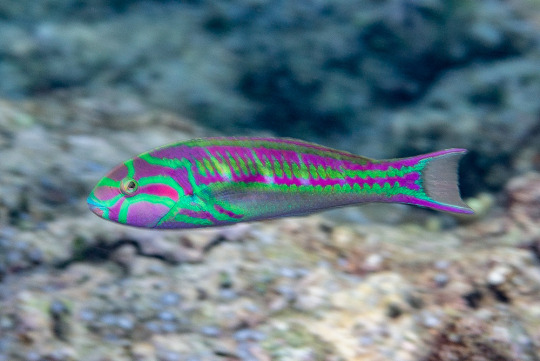
#Thalassoma quinquevittatum#Thalassoma#Labridae#Labriformes#Actinopterygii#Chordata#fivestripe wrasse#wrasse#fish#wildlife#nature#animal#creative commons#indonesia
3 notes
·
View notes
Text
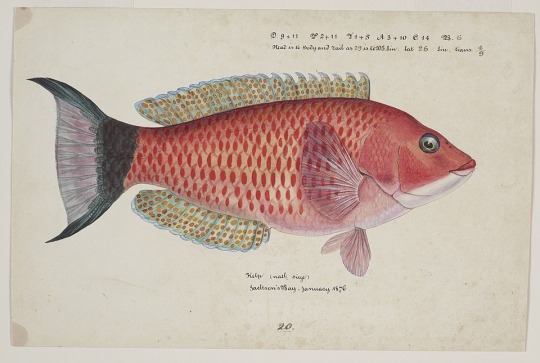
Range: Waters around New Zealand
#poll#Class: Actinopterygii#Order: Labriformes#Family: Labridae#Genus: Pseudolabrus#Pseudolabrus Miles
22 notes
·
View notes
Text







Klunzinger’s wrasse (Thalassoma rueppellii) themed UFO cuff!!! I don’t usually do asymmetrical designs like this, it was fun!
Fish photo from here: https://www.tumblr.com/herpsandbirds/779293633302200320/klunzingers-wrasse-thalassoma-rueppellii
#my crafts#diy#kandi#kandi making#my kandi#kandi bracelet#kandi cuff#klunzinger’s wrasse#fish#thalassoma rueppellii
69 notes
·
View notes
Text


Klunzinger's or Rueppell's Wrasse (Thalassoma rueppellii), family Labridae, order Labriformes, endemic to the Red Sea
Like most wrasses, all of the younger individuals are females, that become male later in life (protogynous hermaphrodite).
photographs: IKER & Dr. Thomas Dörner
#wrasse#fish#bony#thalassoma#labridae#labriformes#ocean#ichthyology#animals#nature#middle east#africa
737 notes
·
View notes
Text
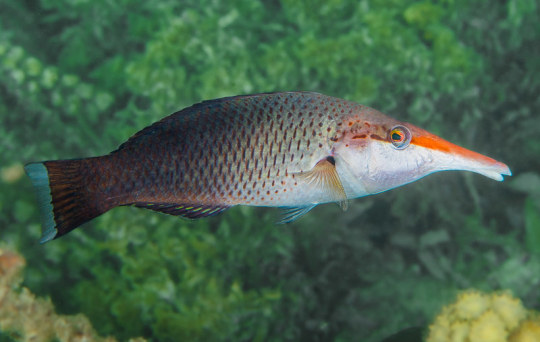
A female Pacific bird wrasse (Gomphosus varius) in Tahiti, French Polynesia
Though this individual is female now, bird wrasses undergo sequential hermaphroditism, and may become male later in life
by François Libert
#bird wrasse#wrasses#bony fish#fish#gomphosus varius#gomphosus#labridae#labriformes#actinopterygii#chordata#wildlife: tahiti#wildlife: oceania
185 notes
·
View notes
Text
Wet Beast Wednesday: California Sheephead Wrasse
A lot of people through history and the modern day have an overly simplistic view about sex, both in the sense of biological sex (that is, what gametes something produces) and sex as in the act of mating. A lot of people think that sex is just a strict binary between males and females, but nature is far more diverse and varied than that (even in humans. Intersex people do exist after all). Today I'm showcasing one of the animals that completely goes against the alleged sex binary: the California Sheephead Wrasse. And yes, this is a pride post.

(Image: a male California Sheephead Wrasse in a tank in the Monterey Bay Aquarium. It is a large fish with a bulbous head. The head and tail are black, midsection is pink, and the belly and chin are white. End ID)
The California Sheephead (Semicossyphus pulcher) is a large fish in the Wrasse family of Labridae. They are sexually dimorphic, with the males and females appearing distinct from each other in size, shape, and color. Males are larger than females, reaching up to 91 cm (3 ft) and 16 kg (35 lbs), though there is quite a bit of size variation based on food availability. They have flatter faces than females thanks to a bulbous bump on the forehead. This lump is the namesake of the fish, since it allegedly make it look like it has a sheep's head. I personally don't see it at all. Males have black heads and tails with a white chin and underbelly and pink midsection Females are smaller and colored silvery to a dull pink all over except for their white chins and underbellies. There isn't really a maximum size or weight for females for reasons I'll get into later. The fish have large canine teeth that protrude from the mouth and modified throat bones that form a grinding apparatus called the throat plate.
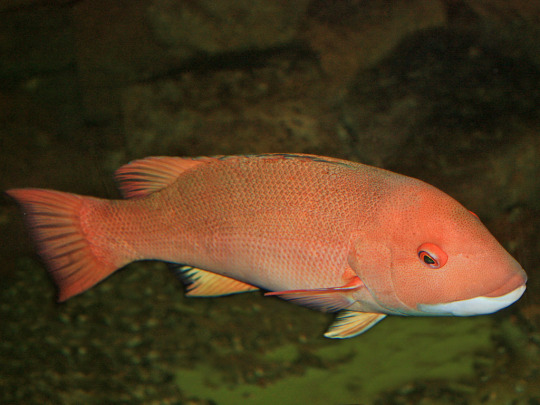
(Image: a female California Sheephead. It has a less bulbous head than the male and is a pale pink all over, except for the white belly and chin. End ID)
Sheepheads, like many wrasses, are sequential hermaphrodites. A sequential hermaphrodite can transition between sexes during its life (as opposed to a simultaneous hermaphrodite, who can produce both sperm and eggs at the same time). Every California Sheephead is born female and some will become male later in life, making them protogynous. Protogyny is the most common form of hermaphroditism in fish, with over 75% of known sequentially hermaphroditic fish species being protogynous. This transition is a one-way process, males will not turn back into females. The transition is triggered by a number of factors, primarily size and the local availability of males. If there are not enough males in the area, the largest female will transition to male to fill the role. This transition takes between 2 weeks and a few months depending on availability of food and other conditions (temperature seems to play a role) and the fish will be capable of producing sperm before fully assuming the male morphology.
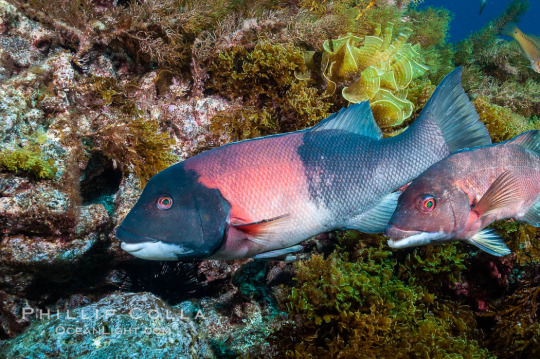
(Image a male and female Sheephead swimming next to each other. The female is roughly half the size of the male. End ID)
During mating season (July-September), males will pick a territory and claim all nearby females as mates. A younger male without a territory may challenge an alpha male to try to claim his territory. These fights are often resolved with threat posturing, but if neither male backs down, they will fight with biting and raking teeth against the opponent. During mating season, females will release batches of 375,000 eggs almost daily for males to fertilize. During this time, the alpha male will patrol his territory to mate as much as possible while chasing off smaller males who may attempt to sneakily fertilize some of his female's eggs. The larvae are planktonic for their first 34-78 days, and will sink as they grow. Juveniles have a different coloration to the adults. They are orange, with a white stripe running down the body and dark spots on the fins. The average maximum age of a California Sheephead is 21 years, but the oldest individual on record was 53 at the time of capture.

(Image: a juvenile Sheephead. It is a small, orange fish with a white stripe running from eye to tail and black spots on the pelvic, anal, dorsal, and tail fins. End ID)
The California Sheephead lives on rocky reefs and kelp forests from southern California to the Baja peninsula and Gulf of California. They prefer shallow water between 3 and 30 meters (10 - 100 ft) deep, though males will occasionally venture deeper. Sheepheads are predators that hunt hard-bodies invertebrates including urchins, shelled molluscs, and crabs. Juveniles hunt smaller prey such as sponges, bryozoans, and barnacles. The protruding canines give the fish a better grip when trying to pry food off of rocks. They crush the hard shells of the prey with sharp teeth before swallowing. The shells are then further ground down by the throat plates. Smaller individuals have been known to break open urchins too large to bit by picking them up and hammering them into rocks. Sheepheads play an important role in kelp forest ecosystems by keeping urchin populations down. Urchins eat kelp and without predators keeping their numbers in check, can reduce kelp forests to urchin barrens. Sheepheads are known to have a high site fidelity, meaning they will return to the same places over and over. They will maintains a sleeping spot (usually a crevice they can hide in or rock they can hide under) and return to the same places to hunt. They are diurnal and return to their sleeping spots at night to avoid predators.

(Image: a male Sheephead trying to pick up a sea urchin with tis mouth. End ID)
California Sheephead Wrasses are classified as vulnerable to extinction by the IUCN. Their primary threat is overfishing. The Sheepheads have been commercially fished since the 1800s and their numbers have dropped. The hermaphroditic nature of the species actually makes things worse. Commercial fishers are incentivized to catch the largest fish and the largest Sheepheads are the males and females that are likely to transition to male. Unlike with other species, there aren't small males around to make up for the loss of large males to fishing since the small fish are the females. The loss of males and the largest females (who are the ones most likely to transition to male) means there aren't enough males around during mating season to keep the population high enough. The introduction of marine protected areas and fishing regulations have helped the population recover. The loss of the Sheepheads is a big deal since they're one of the species doing the most to keep the kelp forests healthy by eating urchins. Natural predators of the Sheepheads include sharks, sea lions, and giant sea bass.

(Image: a fisherman holding a male Sheephead on a boat. The large canines of the fish are particularly visible. End ID)
#wet beast wednesday#transmasc icons#california sheephead wrasse#sheephead wrasse#wrasse#fish#fishblr#fishposting#pride#hermaphrodite#sequential hermaphroditism#protogyny#marine biology#biology#zoology#ecology#animal facts#educational#informative#image described
102 notes
·
View notes
Text
youtube
NEW DISCOVERIES ON WRASSES USING TOOLS TO CRACK OPEN PREY
New observations have significantly expanded our understanding of anvil use in wrasses, particularly among South American wrasses, Halichoeres species. This tool-use behavior, in which wrasses use hard surfaces to break open prey, was once thought to be rare and restricted to a few species and locations. However, recent findings from Southern Brazil and the Turks and Caicos Islands indicate that anvil use is far more widespread than previously recorded. Wrasses have been observed using a variety of hard surfaces, including rocks, rubble, and even live conch shells, to crack open crabs, sea urchins, and molluscs, demonstrating remarkable behavioral flexibility.
A key feature of this behavior is its adaptability. Wrasses do not rely on a single anvil or striking point during an event; instead, they are highly opportunistic, shifting between different surfaces as needed. This flexibility enables them to exploit a diverse range of prey and enhances their foraging efficiency. Notably, no strong preference for one side of the body was observed during anvil use, suggesting that wrasses are not lateralized in the same way that tool-using primates often are.

-Sequence of a yellowhead wrasse, Halichoeres garnoti, striking a brittle star arm on rubble by swinging its head from the left to the right
The discovery of anvil use in additional wrasse species suggests that this behavior may be far more widespread than previously believed. To fully grasp the extent of anvil use across various species and regions, further focused research is essential. Controlled experiments offering prey to wrasses could yield valuable insights into the evolution of this behavior, its ecological advantages, and its broader evolutionary significance.
video: A yellowhead wrasse (Halichoeres garnoti) cracking open a brittle star to access the meat inside, using rocks and rubbles, and even a live conch, by C.E. O'Brien
Reference (Open Access): Tariel-Adam et al., 2025 Tool use by New World Halichoeres wrasses. Coral Reefs
37 notes
·
View notes
Text



Once in a Blue Moon: The Bluehead Wrasse
The bluehead wrasse (Thalassoma bifasciatum) is a small species of wrasse found only in the western Atlantic Ocean; particularly around the Caribbean and the northern coast of South America. They inhabit coral reefs, and occasionally along sandy bottoms and sea grass meadows. Bluehead wrasse prefer shallow, warm, clear water and reefs with lots of hiding places that they can easily access.
T. bifasciatum is noted for its bright coloration. Females and small males are bright yellow with a white underbelly, while larger males have a greenish body and a blue head, seperated by thick black and white stripes. These large males are typically 7-8 cm (2.7-3.1 in) in length, while smaller males and females are around 6 cm (2.3 in).
Like many coral reef fish species, the bluehead wrasse engages in protogyny. All eggs hatch as females, and as they mature some change into males. These young males, known as initial phase (IP) males, continue to resemble females but are fully capable of reproduction. Eventually, the largest of them transition into a secondary phase, also known as the terminal phase (TP). TP males carry the characteristic blue and green markings of bluehead wrasse, and are significantly larger. The transition from female to IP, IP to TP, or even directly from female to TP can occur at any time, and is particularly triggered by removal of dominant (TP) males from a population.
Reproduction typically occurs from January to August, though it can continue sporadically throughout the year. Mature adults participate in group spawns, in which females and both male types converge at spawning sites. Males compete for proximity to females, and typically TP males will closely guard access to a harem of 30-50 females, while IP males will attempt to use their coloring to sneak in and mate surreptitiously. T. bifasciatum are broadcast spawners; both sexes release their gametes into the water column, where they are fertilized and carried away by the current.
Eggs spend 6-8 months free floating, sometimes drifting miles from their spawning grounds. After hatching into juveniles (larvae), they burrow into the sand and remain there for several months before emerging to seek out a coral reef in which to shelter. At this point, a year after hatching, they are typically mature and ready to mate themselves. Individuals can live up to 3 years in the wild, though juvenile mortality is high.
Bluehead wrasse are cleaner fish. The majority of their food are parasites picked off of larger fish, as well as shrimp, krill, crustaceans, and plankton gathered from the coral itself. However, they are also often food themselves for larger fish, moray eels, and stingrays.
Conservation status: The IUCN considers the bluehead wrasse to be Least Concern. Their primary threat is habitat loss due to coral reef bleaching.
If you like what I do, consider buying me a ko-fi!
Photos
Doug Perrine
Terence Zahner
Nick Hobgood
#bluehead wrasse#Labriformes#Labridae#wrasses#ray-finned fish#bony fish#fish#marine fauna#marine fish#coral reefs#coral reef fish#atlantic ocean#queer animals#queer fauna
46 notes
·
View notes